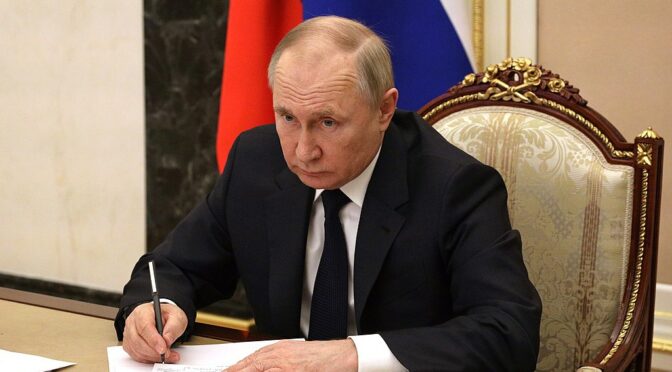Article published in The Daily Telegraph, 3 May 2022. © Richard Kemp
It was always going to be an almighty challenge for Vladimir Putin to successfully redeploy his forces from the suburbs of Kyiv to the Donbas and southern Ukraine. History shows that such tactical withdrawals, requiring battered forces to attack on a new axis, are the most demanding operations of war, even with the most capable troops and commanders. Putin has neither, and so his plans for a victory in time for Victory Day on May 9 have failed.
The Russian president now faces a tough set of decisions if he is to capture and hold any territory in the medium-to-long term. The forces and leaders he has already deployed have been utterly demoralised by combat against an agile Ukrainian army. Even after weeks of regrouping, the eastern offensive is suffering the same logistical challenges and tactical ineptitude that stalled Russian troops around Kyiv. Some reports suggest the battalions in the Donbas are running dangerously low on fuel and some munitions: we’ve heard these stories before.
Russian forces also appear to be plagued by “casualty aversion”, meaning troops are withdrawing from captured areas soon after declaring victory. They have become so gun-shy and war-weary that they are unwilling to take the risks needed to secure large breakthroughs.
It will therefore have dawned on the leadership in Moscow that new manpower is urgently needed. But this is easier said than done. Pentagon assessments suggest that in the last week Russia has only managed to add one battalion tactical group to its order of battle, taking the total from 92 to 93. The final defeat of Mariupol will free up some ground troops, but not in significant numbers.
This diffident force might well be able to strike targets using its superior air power, but long-range shots alone cannot win battles, and they are hardly a one-sided utility. The Ukrainians have been making their own limited artillery strikes count, both as a result of improved combat proficiency and accurate point targeting. Much of this comes from technical intelligence provided by Britain and America. Ukrainian forces now regularly seem to be striking important strategic targets within Russia’s borders, in scenes that have been compared to the British bombing raids on Berlin in 1940 and the American Doolittle raid on Tokyo in 1942. They have also run a successful assassination campaign against Russian generals on the battlefield.
Another concern for Moscow is the arms supply to Kyiv from the West in ever-increasing scale and potency, including the weapons and vehicles promised by Boris Johnson to the Ukrainian parliament yesterday. The effectiveness of these supplies can be seen in Russia’s reaction, with Putin’s generals undertaking a significant – and risky – effort to interdict Western equipment. There has been an intensification of missile attacks against depots and supply routes as well as the ramping up of anti-Nato rhetoric, including nuclear threats.
We should expect more such nuclear hysteria from Kremlin mouthpieces as Putin decides whether he will go big or go home, for he undoubtedly knows that to continue with the “special military operation” as it stands is unsustainable, as his resources slowly degrade in a bogged-down battle with no end in sight.
One way out in the short time would be to declare all-out war on Ukraine, bringing about a mass mobilisation in Russia. This would ease some of the problems with troops on the ground, and Victory Day provides a chance to announce it. But it is not without its own risks. Ordinary Russians, already suffering under sanctions, will not want to see more of their sons used as cannon-fodder. We have already seen an outcry from some mothers, and indignation at viral stories of mobile crematoria and corpses being left behind.
The increasingly absurd nuclear rhetoric directed at the West risks a similar backlash, this time from countries such as Germany which have thus far been reluctant to completely disengage from Russian oil and gas – a critical resource for military funding.
As Moscow prepares for military parades, trumpets blaring, Putin’s options are narrowing. We can only hope this doesn’t lead him to lash out on more Ukrainian civilians.
Image: Wikimedia Commons

